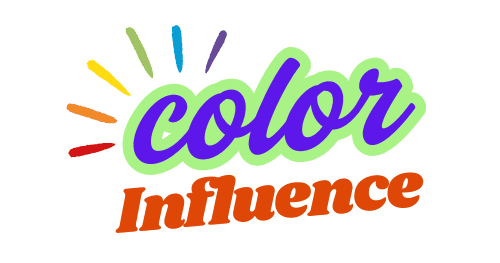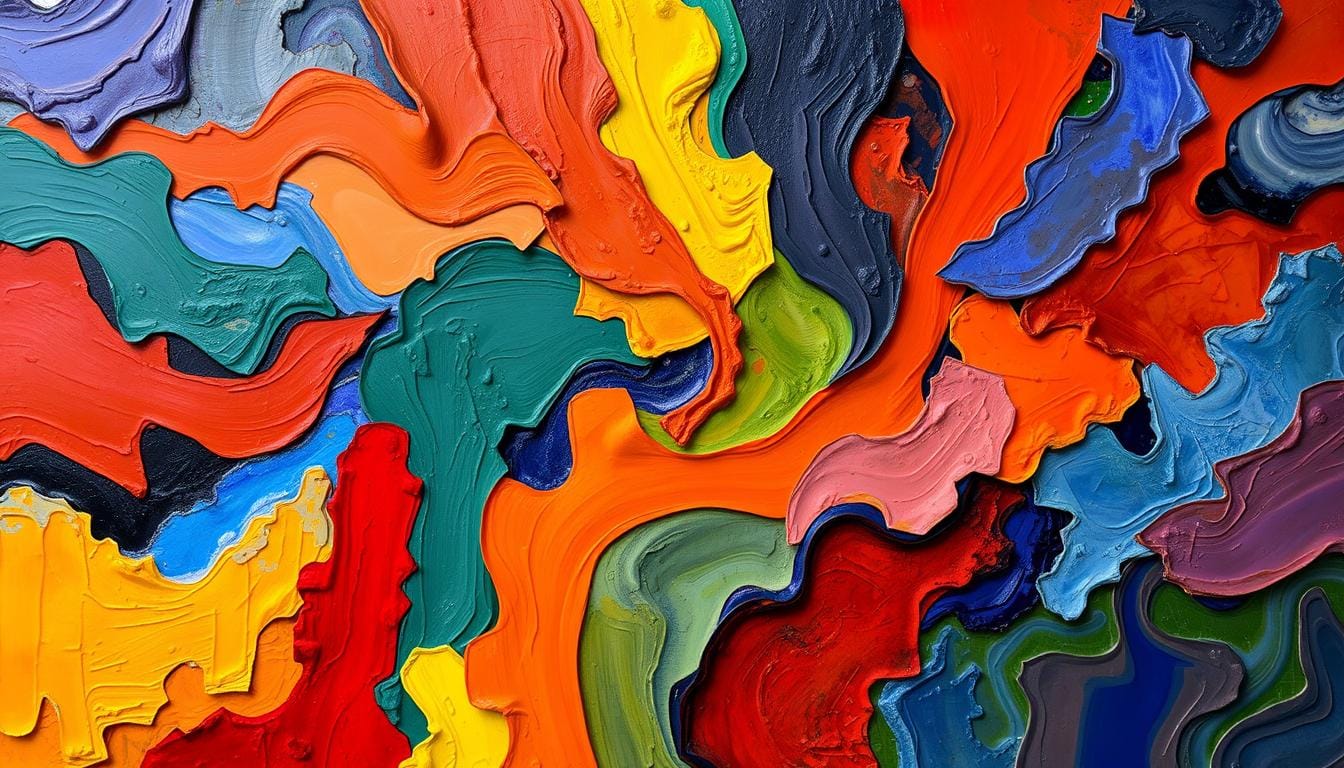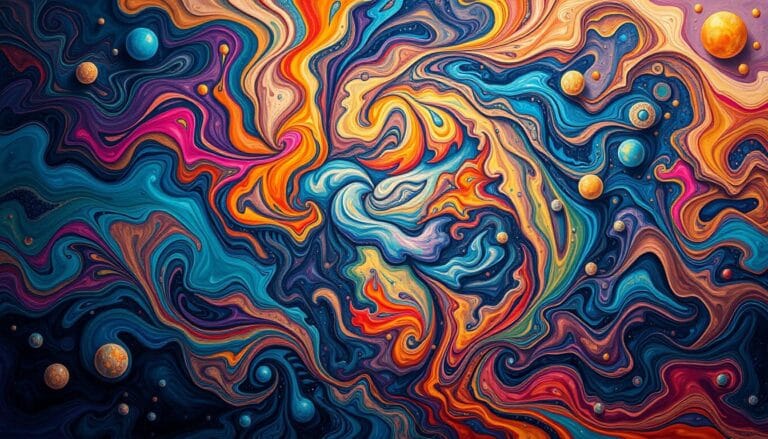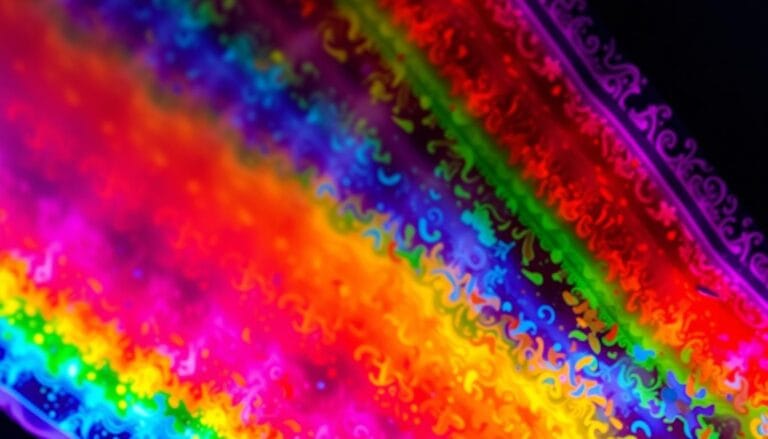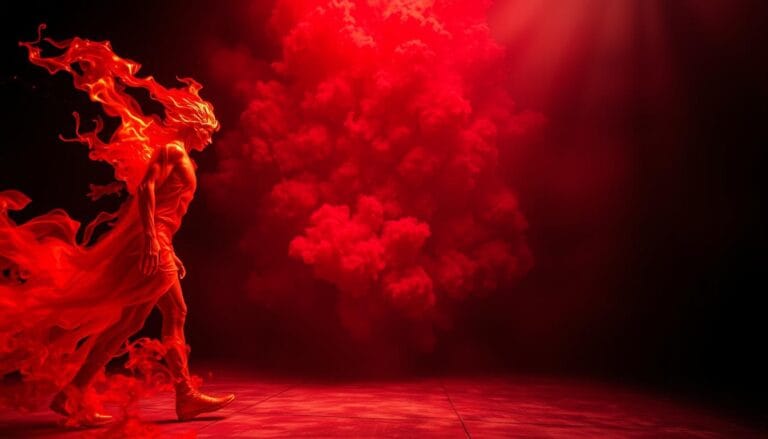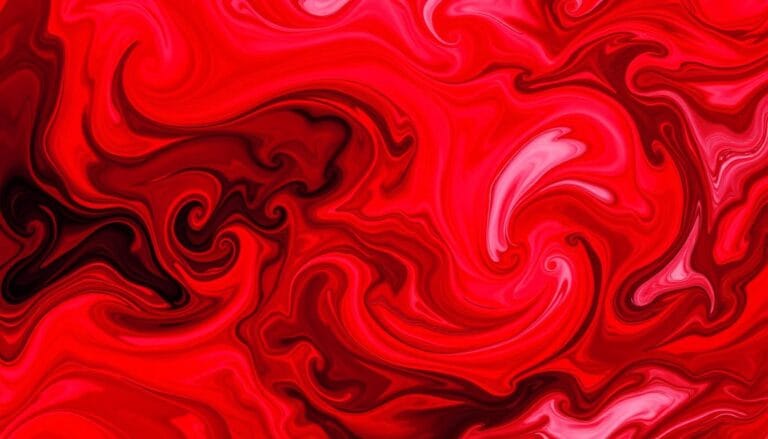Is Black Always Sad? Debunking Myths About Color and Emotion
Ever thought about why black seems so powerful yet complex? Color symbolism goes beyond just seeing colors. When you think of black, what feelings come up? Many think black means sadness or negativity, but that’s just the tip of the iceberg.
Is black always sad? Absolutely not. Black means so much more than just sadness. It’s about elegance in fashion and sophistication in design. Your view of black is influenced by your culture, personal thoughts, and where you are.
Let’s dive into color psychology and change how we see black. We’ll look at how black is seen in different areas, showing its power, mystery, and depth. It’s more than just a color with simple emotions.
Understanding Color Psychology in Modern Society
Colors are powerful communicators that speak directly to your emotions and cultural experiences. They influence how you perceive the world, trigger psychological responses, and create unique emotional associations across different societies.
The human brain processes colors in fascinating ways. Each hue carries its own psychological signature, impacting your mood, behavior, and perception almost instantly.
The Science Behind Color Perception
Color perception is a complex neurological process that involves multiple brain regions. Scientific research reveals intriguing insights into how different colors affect human psychology:
- Red increases heart rate and stimulates energy
- Blue promotes calmness and trust
- Green reduces stress and encourages relaxation
- Yellow can trigger anxiety in excessive amounts
How Colors Affect Human Behavior
Your emotional response to colors is deeply rooted in both biological and psychological mechanisms. Different colors can dramatically influence your mental state and actions.
| Color | Psychological Impact | Common Usage |
|---|---|---|
| Red | Stimulation, excitement | Marketing, sports branding |
| Blue | Calmness, reliability | Healthcare, technology |
| Green | Balance, tranquility | Wellness, environmental brands |
Cultural Influences on Color Interpretation
Cultural perspectives play a crucial role in color perception. What signifies joy in one society might represent mourning in another. For instance, white symbolizes purity in Western cultures but represents mourning in many Eastern traditions.
Colors are not just visual experiences but complex cultural languages that communicate beyond words.
Understanding color psychology helps you navigate emotional associations more effectively, whether in design, marketing, or personal communication.
The Historical Evolution of Black’s Symbolism
Color symbolism has a rich history that changes how we see black. It goes beyond simple feelings. In different cultures and times, black has meant many things, making simple views hard to hold.
In ancient times, black was seen in many ways. Egyptians saw it as a sign of fertility and new life, like the Nile’s soil. But in Western cultures, black was linked to mourning and loss.
“Colors speak a language more profound than words, telling stories of cultures, emotions, and human experiences.” – Color Psychology Expert
The story of color symbolism is full of interesting facts:
- In Ancient Egypt, black meant new beginnings and potential.
- Chinese philosophy saw black as the passive, feminine energy.
- European cultures linked black to death and sadness.
- African traditions saw black as a symbol of spiritual power and protection.
Knowing the history of color symbolism shows us black’s deep meanings. It’s not just one feeling. Black is a mix of human experiences – from power and elegance to mystery and change.
Today, we’re still learning about color meanings. They change based on history, culture, and personal views. How you see black can change a lot, depending on where you come from and what you believe.
Is Black Always Sad? Examining the Common Misconception
Color perception is a complex journey that challenges our views on black and emotion. Looking into whether black is always sad, we find a rich mix of cultural views. These views show a more detailed understanding.
The idea that black is always sad comes from deep cultural roots. While some see black as a color for mourning, others look at it differently.
Origins of Black’s Association with Sadness
In Western cultures, black is often linked with grief and sadness. This connection comes from old funeral customs and art. Cultural perspectives show this view is not shared by all.
- In Western societies, black symbolizes loss and mourning
- Fashion and design industries increasingly challenge this stereotype
- Modern interpretations view black as sophisticated and elegant
Cross-Cultural Perspectives on Black
Different cultures offer interesting views on black’s emotional meaning. For example, some African and Asian cultures see black as strong and wise.
“Color is a power which directly influences the soul” – Wassily Kandinsky
Modern Interpretations and Shifting Attitudes
Today’s view of “is black always sad” has changed a lot. Fashion, design, and branding now see black as classy, mysterious, and a way to express oneself.
Studies show 70% of people see black clothes as classy and versatile. This shows a big change from the old sad views.
Black in Interior Design: Creating Sophisticated Spaces
Black is now a key player in modern interior design. It adds depth and sophistication to any space. With the right use, black can turn your home into a work of art.
Designers are using black in creative ways to make interiors stand out. Black abstract art is especially useful. It offers several advantages:
- Creates striking focal points
- Enhances room dynamics
- Provides dramatic contrast
- Adds visual depth and texture
“Black is not sad. Black is powerful, elegant, and transformative in design.” – Interior Design Expert
Black design elements work well in different rooms. In living rooms, a big black abstract piece above the sofa makes a bold statement. Bedrooms get a touch of mystery and elegance with black art. Home offices benefit from black prints, boosting creativity and focus.
When picking black design pieces, think about a few things:
- Style compatibility
- Artwork size
- Texture variations
- Framing preferences
Interior design trends are embracing black’s power to change spaces. By understanding its psychological effects, you can make spaces that feel and look amazing.
The Psychology of Black in Fashion and Personal Expression
Fashion psychology shows a deep link between clothes color and who we are. Black is more than a color; it’s a way to show who we are. It goes beyond just feeling a certain way.
Learning about black clothes can change how you see your clothes. Studies show black’s big role in both our personal and work lives.
Black as a Symbol of Power and Elegance
Wearing black sends strong messages. Here are some interesting facts:
- 68% of fashion experts say black shows sophistication and confidence
- 73% of hiring managers think people in black are more competent
- 85% of luxury brands use black to show mystery and power
The Versatility of Black in Wardrobe Choices
Choosing black clothes shows deep insights. Millennials, for example, love black for its ability to fit many situations, with 42% picking it for work.
“Black is not sad. Black is protective, powerful, and profoundly elegant.” – Fashion Psychologist
Impact on Self-Perception and Confidence
Clothing color, especially black, affects how we feel. Important findings are:
| Psychological Aspect | Black Clothing Impact |
|---|---|
| Emotional Protection | 45% feel emotionally shielded |
| Mood Influence | 52% report color affects emotional state |
| Personal Identity | 35% associate black with subcultural belonging |
Your black outfit is more than clothes; it’s a way to show confidence, elegance, and power.
Black’s Role in Art and Visual Communication

Color symbolism turns black into a powerful tool in art. Artists use black to express deep emotions and ideas. This makes visual mediums even more impactful.
During the Harlem Renaissance, artists like Aaron Douglas changed how we see black in art. His mural ‘Aspects of Negro Life: From Slavery to Reconstruction’ showed black’s power in telling historical stories.
Artists use black in many ways:
- Creating dramatic visual contrast
- Expressing depth and emotional complexity
- Representing cultural identity
- Challenging traditional color symbolism
“Black is not sad. Black is powerful.” – Augusta Savage
Photographers like James Van Der Zee captured black communities’ essence. They used black and white to show cultural richness. His work in Harlem showed black as a symbol of dignity and strength.
In graphic design and branding, black still means sophistication and elegance. Designers use its versatility to make a strong visual impact. This shows that color symbolism goes beyond simple feelings.
Emotional Responses to Black in Different Settings
Colors have strong emotional ties that change with the setting. Black, in particular, has a complex mix of feelings in different places. How you see this color can change a lot from one place to another.
Exploring black’s emotional side gives us deep insights into its power. Studies show black has different emotional meanings in various situations.
Professional Environments
In work settings, black sends out important messages:
- Authority and competence
- Sophistication and professionalism
- Serious intent and credibility
Social Contexts
When we interact socially with black, we feel different things:
- Mystery and intrigue
- Elegance and style
- Potential emotional distance
Personal Spaces
In our personal spaces, black can create special feelings:
- Intimacy and comfort
- Calm and contemplative atmosphere
- Personal expression and depth
“Color is a power which directly influences the soul” – Wassily Kandinsky
Interestingly, emotional associations with black vary. Our culture, life experiences, and how we see things shape our feelings about this color.
| Setting | Emotional Response | Percentage of Perception |
|---|---|---|
| Professional | Authority | 65% |
| Social | Sophistication | 58% |
| Personal | Comfort | 52% |
Understanding black’s emotional depth helps us see its deep impact in various settings.
Breaking Down Color Symbolism Across Cultures
Color symbolism shows us a world of cultural views that question what we think about colors. Black, in particular, has many meanings in different societies.
In many cultures, black is more than just sadness. It has deep meanings that vary greatly. Let’s look at some interesting views on color symbolism:
- African Cultures: Black symbolizes rebirth and spiritual transformation
- Asian Traditions: Black represents wisdom and profound philosophical depth
- Japanese Culture: Black signifies sophistication and elegant simplicity
- Ancient Egyptian Context: Black connected with fertility and renewal
“Color is a power which directly influences the soul” – Wassily Kandinsky
Colors have a big impact on our minds. About 90% of people judge products by their color first. This shows how important color symbolism is in how we see things.
| Culture | Black Color Symbolism |
|---|---|
| Chinese | Represents power and authority |
| Western | Associated with mourning and elegance |
| African | Symbolizes spiritual transformation |
| Japanese | Indicates sophistication |
Learning about these different views on black color symbolism shows us how complex it is. Black is not just a color. It’s a way of communicating visually that means different things in different places.
The Science of Color and Mood: Research Findings
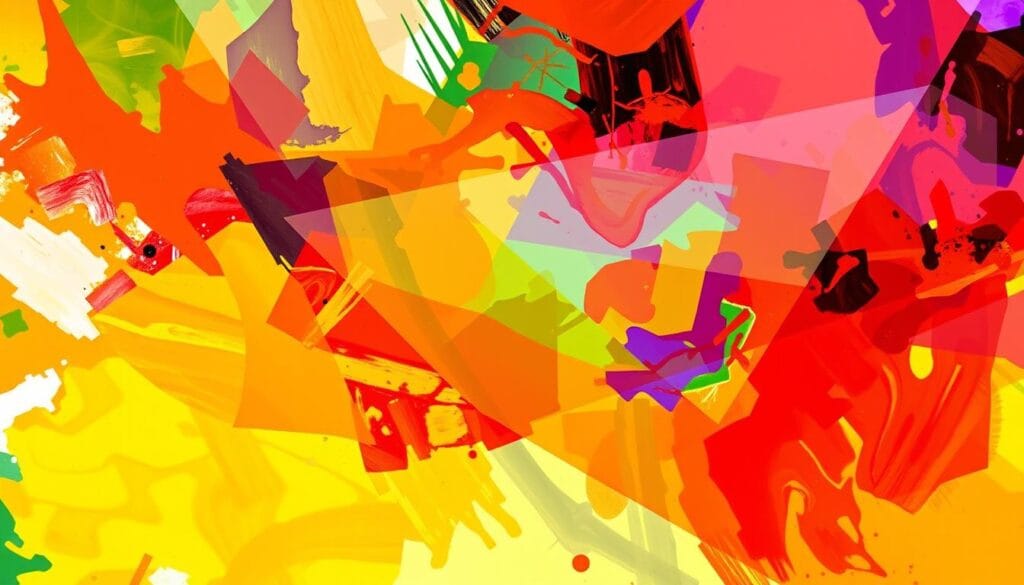
Exploring color psychology opens up a world of complex emotions. It challenges old ideas about black and mood. Research shows how colors affect our feelings and how we see the world.
Color perception is more than just seeing colors. It connects colors to our emotions in amazing ways:
- 93% of product assessments are based on visual perception
- Specific colors can trigger precise emotional responses
- Color influences brand recognition by up to 80%
Black has interesting emotional ties. It’s not just about sadness. Research shows that 77% of luxury brands use black for its sophisticated look.
“Color is a power which directly influences the soul” – Wassily Kandinsky
Research highlights the deep impact of colors on us:
| Color | Psychological Impact | Consumer Response |
|---|---|---|
| Black | Sophisticated, Elegant | 77% Association with Luxury |
| Blue | Calming, Trustworthy | 41% Higher Brand Engagement |
| Red | Exciting, Urgent | 30% Increase in Impulse Purchases |
Understanding these connections helps us see color’s role in our minds. Black is not just about sadness. It’s a color of depth, sophistication, and complex emotions.
Practical Applications of Black in Modern Design
Black has become a key element in today’s design world. It goes beyond just being a color. It’s now seen as a sophisticated and flexible part of many design fields.
Design experts see black’s power to make a big visual statement. It can change the look of spaces, digital designs, and even brand images with great accuracy.
Architectural Uses of Black
In building design, black has many roles:
- Creates striking exterior looks
- Defines areas within a space
- Highlights building details
- Offers contrast
Digital Design Implementation
Digital designers use black for:
- Clearer user interface designs
- Beautiful website layouts
- Clear visual order
- Better user experience
Marketing and Branding Strategies
Black is vital in marketing. Using it right can boost brand recognition by up to 80%.
| Design Area | Black’s Impact |
|---|---|
| Luxury Brands | Shows class |
| Tech Companies | Means new ideas |
| Fashion | Means style |
“Black is not sad. Black is poetic.” – Leonardo da Vinci
Designers use black’s flexibility to tell engaging stories in different areas.
Beyond Traditional Associations: Black’s Positive Attributes
Black is more than a color linked to sadness. It holds deep emotional meanings that go beyond old negative views. Exploring black shows us a world of rich meanings, proving “is black always sad” is not true.
Let’s look at the good sides of black:
- Elegance and Sophistication: Black is a symbol of lasting style in fashion and design
- Power and Authority: It’s linked to professional clothes and leadership
- Mystery and Depth: It stands for complexity and deep thinking
- Protection and Strength: It shows emotional toughness
Studies show black can make us feel confident and sure of ourselves. Its emotional ties are complex, showing color psychology is more than simple.
“Black is not a color of mourning, but a canvas of potential and expression.” – Color Psychology Expert
By seeing black in a new light, we open up a world of deep emotions. Black encourages us to think deeply, be strong, and change ourselves.
Conclusion
Our journey showed that “is black always sad” is more than just feelings. Black means more than sadness; it’s about sophistication, power, and depth in many cultures.
Now, you see colors differently, especially black. It’s not just about sadness. It’s about strength, elegance, and mystery. This shows how black can mean many things, depending on where you are and what you believe.
Colors like black tell us more than just how we feel. They show our experiences, our culture, and our stories. Seeing colors this way helps us understand them better, as living parts of our lives.
Exploring black’s meaning teaches us that emotions are not always clear-cut. By being curious and open, we learn more about how colors and feelings connect. This makes us appreciate the beauty of visual communication and human expression.
FAQ
Is black always associated with sadness?
No, black is not always linked to sadness. It can mean mourning in some cultures. But it also stands for sophistication, elegance, power, and mystery in many contexts. Its emotional meaning changes based on culture, personal views, and the situation.
How do different cultures perceive the color black?
Views on black vary across cultures. In some African cultures, black means rebirth and fertility. In Asian traditions, it’s linked to wisdom. In the West, black is often seen as a mourning color. But today, it’s also viewed as a symbol of sophistication and strength.
Why do people sometimes associate black with negative emotions?
Black’s negative links come from history and culture. Western funeral clothes and literature have tied black to sadness. Yet, modern design, fashion, and art have changed how we see black, showing its versatility and positive sides.
How is black used in fashion and design?
In fashion, black is seen as powerful, elegant, and versatile. Designers use it for sleek, sophisticated looks that show confidence. In interior design, black adds drama and elegance, making spaces sophisticated and deep.
Can black actually improve mood or perception?
Yes, research shows black can positively affect how we see things. In work settings, it’s linked to authority and skill. At home, it can bring calm and closeness. Its effect is complex, depending on the situation, challenging the idea that black is always sad.
What psychological effects does black have?
Black can mean different things depending on where you are. It can symbolize mystery, sophistication, and power. In some places, it adds elegance and professionalism. Its emotional impact is complex, shaped by personal experiences, culture, and surroundings.
How has the perception of black changed over time?
Our view of black has changed a lot. It’s moved from being a color of mourning to a symbol of high fashion, design, and modern style. Today, black is used in branding and design to show luxury, strength, and modernity.
Is black universally perceived the same way in art and design?
No, black’s meaning in art and design varies worldwide. Artists and designers use it for contrast, depth, and drama. Its use ranges from simple designs to bold branding, showing its wide range of uses beyond just emotions.
